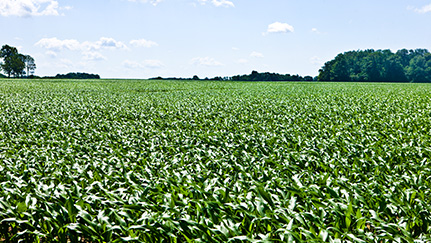With 2024 upon us, farmers should start planning now to optimize output, quality and overall profitability of what they raise in another year of potentially volatile weather patterns and crop markets.
Consider past wins and losses
Start laying the foundation for your 2024 crop with a look in the mirror. Audit past crop performance, what's worked and what hasn't. Once you've identified past wins and losses, maximize the former and minimize the latter in making informed decisions for your next crop.
"Just because we've done things a certain way in the past doesn't mean it will continue to be successful moving forward," said Iowa farmer and Nationwide Agribusiness Risk Management Consultant Derek Hommer, CCA. "By taking a close look at what's been most successful in your farm planning in the recent past, you can start thinking about how to repeat that success in 2024. But you can also find the ways you can evolve to do even better."
Five things to consider in planning your 2024 crop year
Hommer, who also operates a farm in south-central Iowa, recommends weighing a few key variables in planning for the 2024 crop year:
- Crop rotation and soil health. Soil health can be the differentiator between a good crop and a great crop. Healthy soils hold more oxygen, water and carbon, which translates to better root environments and better weather tolerance. Crop rotation can be a key part of building and maintaining soil health.
- Fertilizer and crop protection products. Some weeds, diseases and pests may be likely to return in 2024 if you faced them in 2023. Thoroughly scout crops for any overwintering pests and be ready with the right products to control them. Soil testing in each field can inform fertilizer decisions based on any observed shortages of nutrients your soils and crops will need in 2024.
- Technology. Tools like precision agriculture technologies, GPS mapping, automated systems and data analysis platforms all can contribute to crop success through data-driven decisions. Consider the ROI of all technology, whether it’s new or you've used it in the past.
- Labor and time. Retaining the right workforce has been a recent challenge for a lot of farmers and ag retailers. Whether you're planning to conduct things like herbicide applications yourself or relying on a retail partner to do them for you, make sure the human capital — and most importantly, quality farm labor — is there to get the jobs done in 2024.
- Farm risk management. Based on challenges you faced in past crop years, make sure you have the right insurance policies and risk mitigation strategies in place. This may require updating past policies to make sure you’re not vulnerable to the hazards you’re most likely to face in 2024.
It’s not a one-size-fits-all approach
Though these are universally important to crop farmers, Hommer recommends always applying the lens of your specific farm, acres, crops, necessary crop input ROI, market demands and farm management needs in making key decisions that will influence your crop output, quality and overall success in 2024.
"There's no doubt that there will be challenges for farmers in 2024," Hommer said. "But if you think of these key variables ahead of time, make practical decisions and keep your eye on the ROI of every crop input, you will be well-prepared for the new crop year."
Talk to your farm’s agronomy and financial advisors to ensure you’ve got all the right pieces in place. Contact your local Nationwide Farm Certified agent to make sure your risk mitigation strategy will support success in the 2024 crop year.
